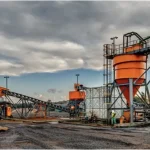On September 30, global mining leader BHP published a report indicating that the transition to sustainable energy will boost copper demand by an additional one million tonnes annually through 2035.
The rising adoption of copper-intensive technologies, especially in renewable energy and electric vehicles (EVs), has already led to a doubling of global copper production rates.
In its report, titled BHP Insights: How Copper Will Shape Our Future, the company revealed that global copper demand has increased at a compound annual growth rate (CAGR) of 3.1% over the past 75 years. Although this growth rate slowed to 1.9% over the 15 years leading up to 2021, BHP anticipates a recovery, projecting a CAGR of 2.6% through 2035.
In 2023, global copper demand reached 31 million tonnes (mt), comprising 25mt of copper cathode and 6mt of scrap. Looking forward, BHP’s Chief Commercial Officer, Rag Udd, estimates that copper demand will surge by 70% by 2050, reaching 50mt annually.
By that time, the energy transition is expected to contribute to 23% of global copper demand, up from the current 7%. Additionally, the digital sector’s share of copper demand is projected to rise from 1% to 6%.
Electric vehicles remain a significant factor in driving copper demand, with consumption in the transportation sector expected to increase from 11% in 2021 to 20% by 2040, according to the report.
However, BHP cautions that meeting this escalating demand will face considerable challenges, including rising production costs and declining ore grades, which have fallen by 40% since 1991. The company estimates that approximately $250 billion in investment will be necessary by 2050 to close the gap between copper supply and demand.
GlobalData, the parent company of Mining Technology, projects that global copper production will reach 22.9mt in 2024, reflecting a 3.2% increase compared to 2023 levels.















